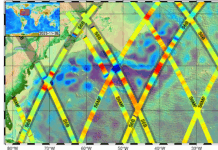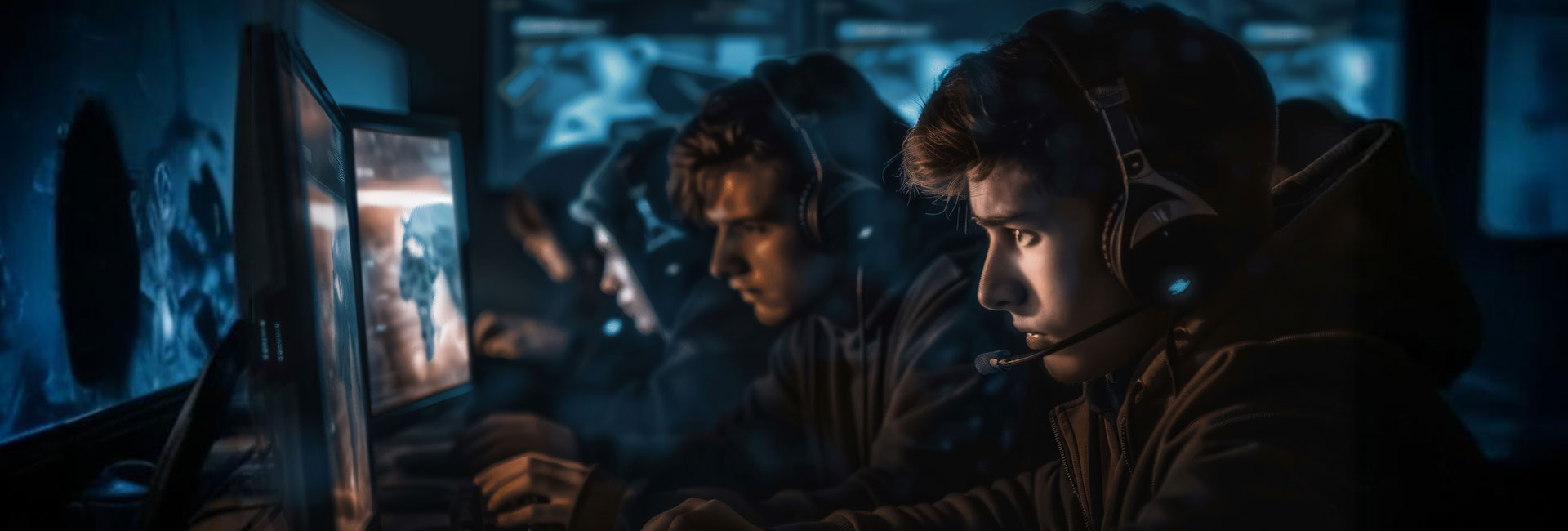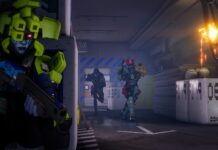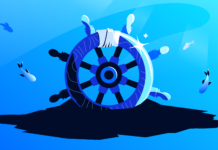Establish Clear Communication Channels
In the realm of game development, establishing effective communication is vital for the success of any project. This goes beyond the simple exchange of emails or sporadic meetings. It calls for a well-thought-out communication strategy that transforms how the development team collaborates. Such a strategy should encompass all stages of the project, from the initial concept to the final release, ensuring that every team member is aligned with the project’s objectives and tasks.
A clear, coherent, and timely flow of information is indispensable in preventing misunderstandings, resolving conflicts, and maintaining a productive and positive team environment. A well-executed communication strategy is directly linked to the game’s success, as it helps in mitigating potential delays and hurdles. Enhancing game design collaboration is crucial for seamless teamwork throughout the development process.
Several tools can facilitate clear communication in game development:
- Project Management Platforms: Platforms like Jira and Trello are more than just task trackers; they are collaborative ecosystems that provide real-time visibility into the project’s progress. These tools help reduce delays in game pipelines by ensuring clarity on tasks, deadlines, and team responsibilities. They also allow for immediate feedback and updates to keep projects on track.
- Jira: Known for task tracking, reporting, and agile boards, Jira is highly customizable and scalable, making it ideal for managing complex projects.
- Trello: With its user-friendly and visual interface, Trello is well-suited for smaller teams or simpler projects, utilizing Kanban boards and task assignments.
- Instant Messaging Solutions: Tools like Slack and Microsoft Teams offer more than basic chat functionalities. They function as dynamic collaboration spaces, facilitating rapid idea exchange, quick decision-making, and immediate problem-solving. This fosters a sense of immediacy and shared understanding, optimizing productivity and efficiency.
- Slack: Offers real-time messaging and integrates with multiple tools to enhance team communication.
- Microsoft Teams: Provides chat, video calls, and file sharing in an all-in-one collaboration hub, ideal for teams needing integrated solutions.
- Scheduled Sync Meetings: Regularly scheduled and structured meetings are essential for keeping the team focused and productive. These sessions should go beyond status updates and include strategic alignment discussions. By setting a clear agenda, dedicating time for brainstorming, and ensuring action items are tracked, these meetings promote open communication and collaboration, driving the project forward efficiently.
- Implement Feedback Loops: Establishing a clear procedure for reviewing and approving assets can significantly boost productivity and reduce misunderstandings. Feedback should be concise, actionable, and documented. This ensures all team members are aware of required revisions, minimizes back-and-forth communication, and simplifies the process by providing a record of communication for reference.
Utilize Version Control Systems (VCS)
Version control systems are indispensable in the efficient and collaborative production of game art. These systems are not just technical tools but strategic frameworks supporting complex game art development processes. They enable multiple artists to work simultaneously on the same assets, track changes, resolve conflicts, and ensure that everyone works with the most updated versions. This streamlined workflow prevents costly mistakes and reduces the risk of losing valuable work. Additionally, these systems maintain a complete history of revisions, allowing artists to revert to earlier versions if necessary, thereby promoting a smooth and productive team environment.
Key features of version control systems include:
- Intelligent Branching and Merging: By creating dedicated branches for experimental features, developers can integrate changes only when they are ready. This approach allows for experimentation with new technologies, algorithms, and designs without risking the core product’s stability. It protects the main branch from potentially problematic code, providing a safe environment for innovation.
- Comprehensive Change Tracking: Detailed change tracking allows teams to revert to previous versions if errors occur. Each change is logged with a timestamp and description, making it easy to identify who made the change and why. This detailed logging enhances collaboration and speeds up the debugging process.
- Cross-Team Synchronization: A collaborative workflow is essential for artists, designers, and programmers working on a shared project. Version control systems track changes, allow for simultaneous editing, and enable easy restoration of previous versions, preventing accidental overwrites and ensuring every team member’s work is preserved.
- Conflict Resolution: VCS tools efficiently manage and resolve conflicts when multiple people work on the same assets. They identify conflicts within project files, highlight differences between versions, and allow you to choose the correct version to keep or combine parts from different versions to create a unified asset.
Adopt Digital Asset Management (DAM) Systems
A properly implemented Digital Asset Management (DAM) system acts as a high-tech library for a game’s creative resources. It centralizes the storage, organization, and retrieval of digital assets, ensuring teams always have access to the most current files. This system ensures that all digital assets, from concept art and 3D models to sound effects and animations, are stored, organized, and easily accessible to the development team.
The benefits of a DAM system include:
- Intelligent Metadata Architecture and Tagging: A metadata-driven approach to categorization tags each asset with relevant keywords and attributes, enabling easy searching and filtering based on specific criteria.
- Automated Version Control: Integrating DAM with a Version Control System (VCS) automates asset version tracking and management, reducing manual processes and the likelihood of human error.
- Centralized, Secure Access: Provides a single source of truth that is accessible, secure, and optimized for rapid retrieval. It should be scalable to accommodate growing data volumes and user bases and designed with high availability for continuous access.
Key features and benefits of DAM systems include:
- Metadata Tagging: Facilitates faster retrieval and searchability, especially useful for organizing 3D models and textures.
- Automated Version Control: Eliminates manual versioning errors, ensuring asset accuracy.
- Centralized Secure Storage: Provides a single source of truth for storing and sharing large-scale assets securely.
- Real-Time Collaboration: Facilitates seamless teamwork, essential for animators and designers working on shared projects.
Automate Repetitive Tasks
Automation in game art creation is not about replacing creative artists but enhancing their capabilities and productivity. By automating repetitive and time-consuming tasks within the game art pipeline, artists can focus more on creative aspects like concept design, character modeling, and environment creation.
Automation can be achieved through:
- AI-Powered Asset Generation: Machine learning tools can automatically generate initial drafts of assets, allowing artists to concentrate on refining these drafts and focusing on the artistic vision. This significantly speeds up the production pipeline, leading to faster turnaround times and increased productivity.
- Continuous Integration Pipelines: Automated testing and deployment processes ensure every asset meets performance and quality benchmarks, allowing artists to focus on creative work. This accelerates the pipeline and enhances overall productivity and morale within the team.
- Intelligent Workflow Optimization: Data-driven development tools analyze the software development lifecycle to identify areas for improvement, providing actionable insights to streamline processes, improve code quality, and accelerate delivery times.
- Testing Automation: Continuous testing frameworks like Jenkins help identify bugs early in the development process, ensuring stable builds throughout the development lifecycle.
Leverage Real-Time Game Art Collaboration Tools
Modern game development often involves global teams, making it essential to use collaboration tools that bridge the gap between asynchronous workflows. These tools facilitate the seamless sharing of assets, code, and documentation, ensuring everyone stays informed and aligned on project goals despite geographical and temporal distances.
Collaboration tools include:
- Cloud-Based Design Platforms: Tools like Google Workspace and Helix Core enable simultaneous editing of documents and assets, with real-time feedback irrespective of location. This speeds up project completion by eliminating delays associated with traditional sequential editing.
- Virtual Design Spaces: These innovative digital environments leverage technologies like VR, AR, and CGI to create immersive experiences tailored to individual or collaborative creative processes.
- Performance-Optimized Collaboration Tools: Tools like Figma and Miro allow for simultaneous brainstorming, creating mockups, and sharing feedback in real-time, significantly speeding up the design and development phases.
Implement Agile Methodologies
Agile methodologies bring flexibility, responsiveness, and optimization to game development processes, allowing development teams to adapt to player feedback, market trends, and technological advancements.
Implementing Agile methodologies involves:
- Scrum and Kanban Frameworks: Breaking down large projects into smaller tasks ensures quicker turnaround times and more frequent feedback, minimizing risks and improving overall project quality.
- Retrospectives: Regular reviews analyze successful and unsuccessful aspects of past projects, identifying areas for improvement and implementing better practices for future endeavors.
- Incremental Development: Developing assets in stages with regular reviews and feedback loops prevents significant problems and ensures a smoother workflow and higher-quality final product.
By embracing these strategies and tools, game development teams can enhance their collaborative efforts, streamline workflows, and ultimately deliver high-quality games more efficiently.
For more Information, Refer to this article.


































